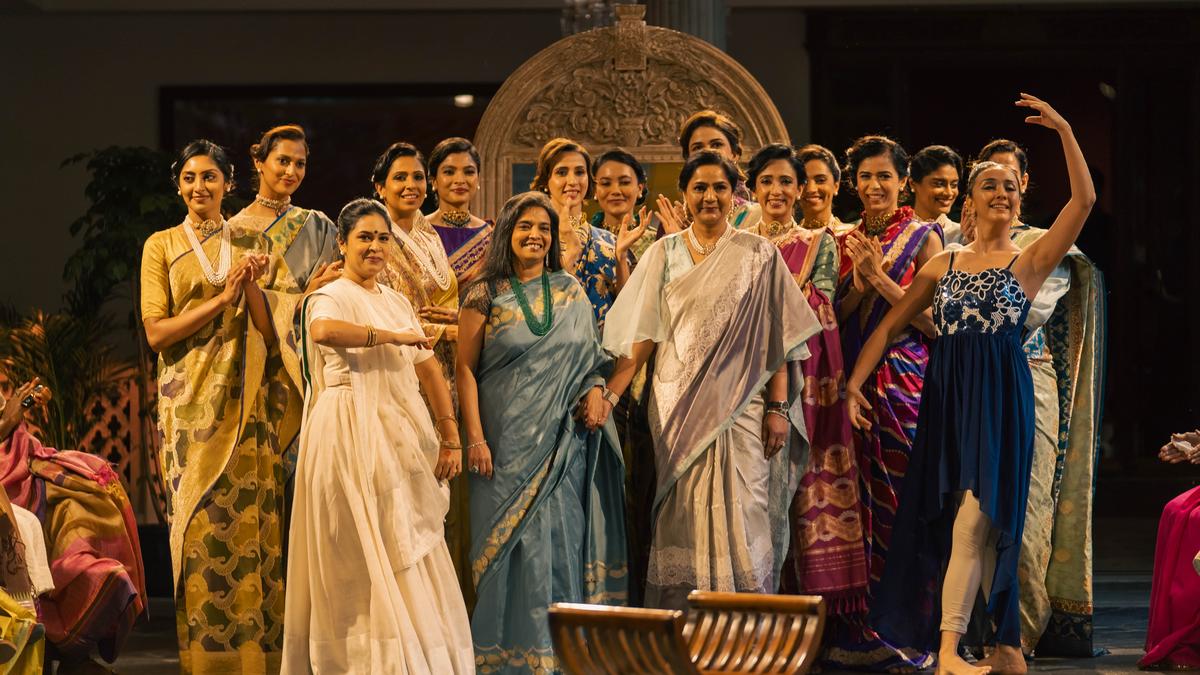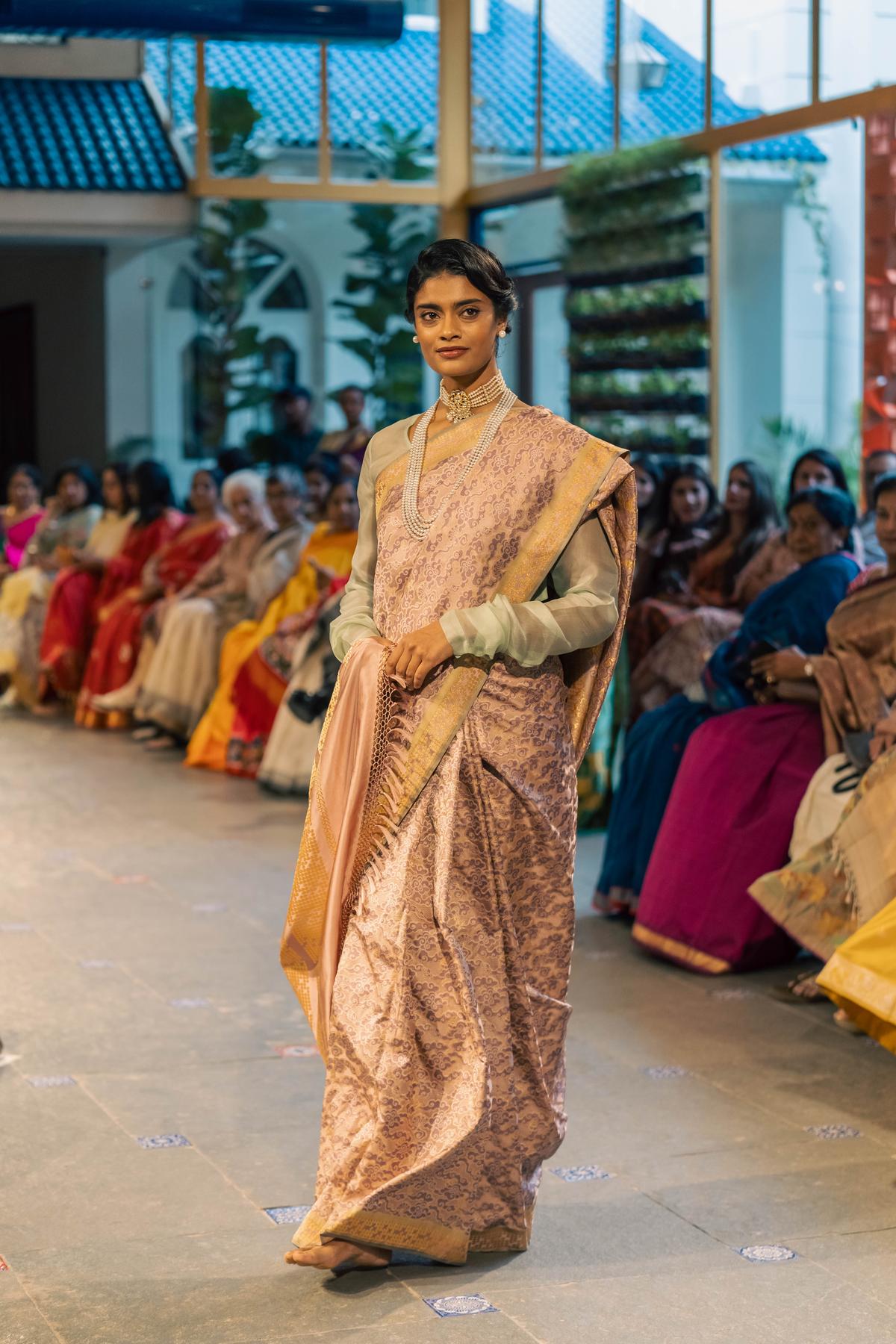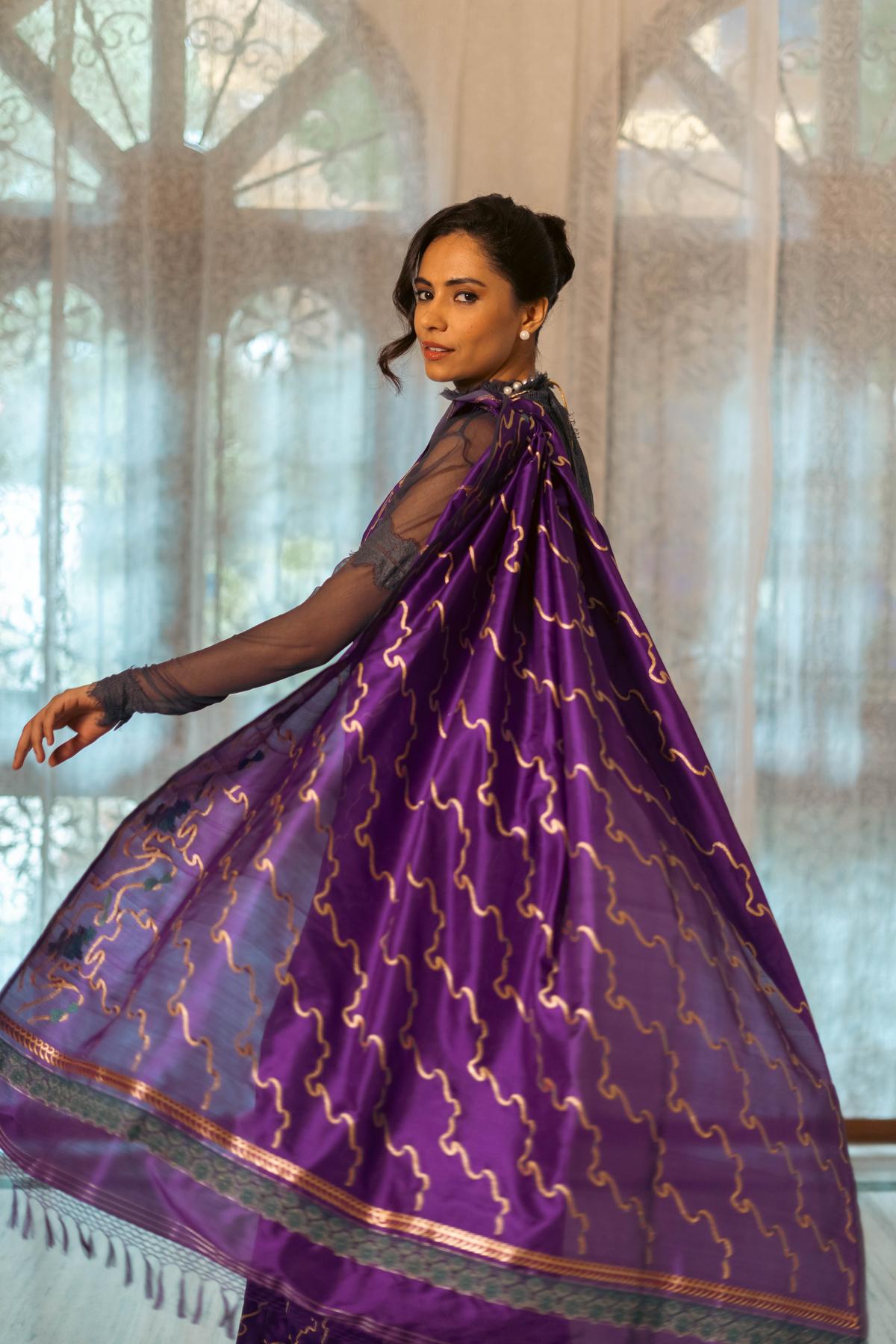
Designers Sunaina (in green), Swati (centre, off white) with models who sport saris from their ‘Varanasi to Versailles’ collection
| Photo Credit: Special Arrangement/Vineet Kapashi
The mention of woven Benares saris might bring up memories of heirloom saris with traditional Indian motifs. While a sari from grandmother’s wardrobe will never go out of vogue, imagine a line of Benares saris that combine Indian brocade techniques and French design influences. Varanasi to Versailles, a new collection by textile designers Swati Agarwal and Sunaina Jalan for their signature label Swati & Sunaina Gold (@swatiandsunaina on Instagram), is a coming together of French romanticism and Benares weaving techniques such as rang-kat, tanchoi, kadhua, jamdani and dampach. The designers unveiled their new collection in Hyderabad with a curated show, presented by Gaurang Shah and Pratiksha Prashant at Gaurang’s Kitchen, Jubilee Hills.
The saris, some of which took more than a year to weave, incorporate Chantilly lace and French-inspired motifs of violins, chariots, lions, sunrise and ribbons in a colour palette that varies from European pastels to deeper jewel tones. There is an interplay of weaves and textures, colours and patterns. Imagine a rang-kat in a diagonal pattern or in mosaics resembling ripples of water in a mix of colours and textures. Some saris have been woven using a combination of silk yarns — eri, muga, mulberry, tussar and zari — and the weavers have done more than cutting of colours (rang-kat); they have also played with yarns and textures. A few saris come with two blouses, one with traditional Indian brocades and the other, incorporated with French lace.

The collection brings together French-inspired design elements in woven Benares saris
| Photo Credit:
Special Arrangement/Vineet Kapashi
The collection has been a four-year journey for Swati and Sunaina. Their experimentation may not come as a surprise to those who have followed their journey. Some of their earlier collections had influences of Persian miniature paintings and Oriental design influences.
The cornerstone of their label, assert the designers, is their use of pure zari. “The zari used in our work is 98.5% pure silver and electroplated in 24-karat gold. Many in the industry use 40-50% silver, which is then treated with copper and dipped in gold. Using pure silver zari ensures malleability for minute designs,” Swati explains. The saris are also lightweight, Sunaina adds, thanks to this use of fine zari on yarns ranging from silks to muslin and tissue.

Elements of French romanticism, such as ribbons, bows and floral patterns on Benares weaves by Swati and Sunaina
| Photo Credit:
Special Arrangement/Vineet Kapashi
Varanasi to Versailles began as an idea in early 2020. Swati and Sunaina were in Paris days before the first lockdown, museum hopping in the company of close associates. The more they discovered, they were inspired to experiment. The collection took shape during the pandemic when further research was completed. “Not many would be aware that France had a zari (which they refer to as metallic yarn) weaving unit and the Maharaja of Mysore was the first to bring one such unit with him to India. A weaver from Benares recreated it from memory,” says Swati.

The designers revisited France to purchase laces and worked on incorporating them on saris, both as embellishments and weaves. “The French have a tradition of using gold and silver together and colours such as greys and blues together; we tried to bring in some of that experimentation in our collection,” says Swati.
The Varanasi to Versailles collection includes lehengas, a few ready-to-wear blouses, dupattas and woven silk belts. “We aren’t creating new product lines but trying to give our buyers accessories to create a complete look,” says Swati.





